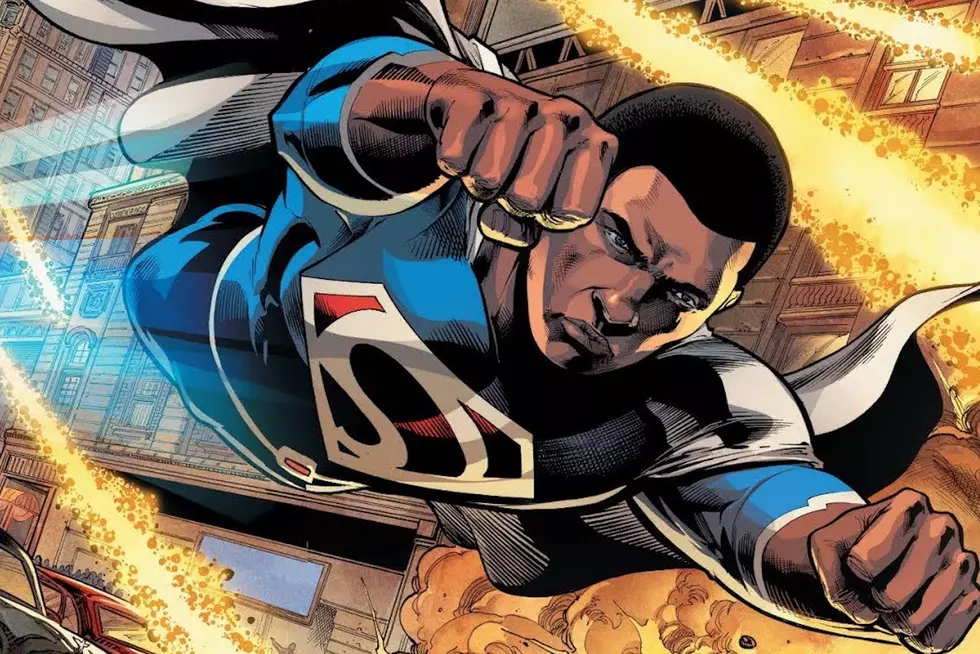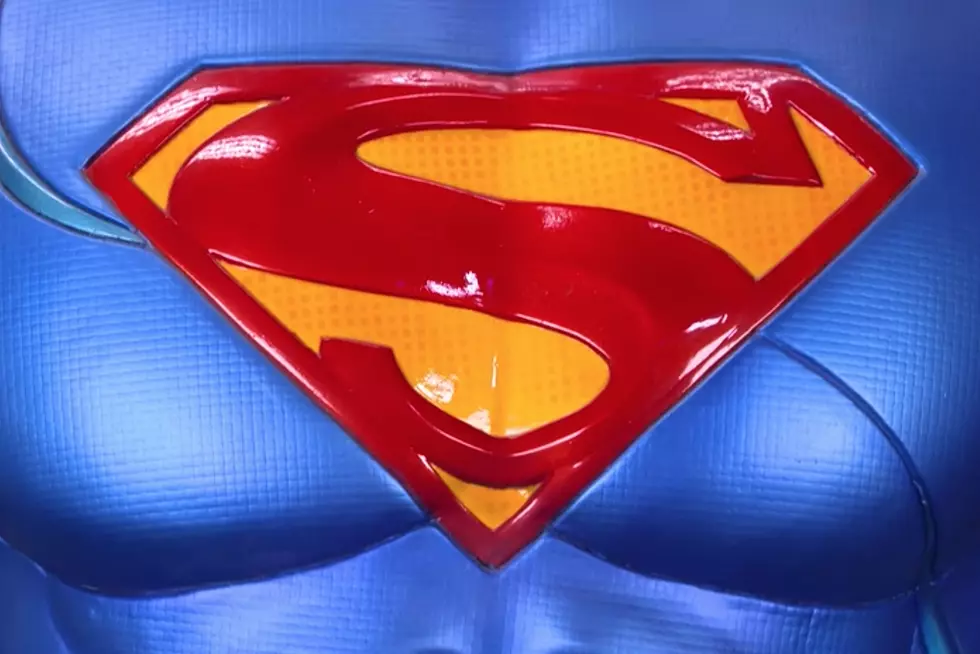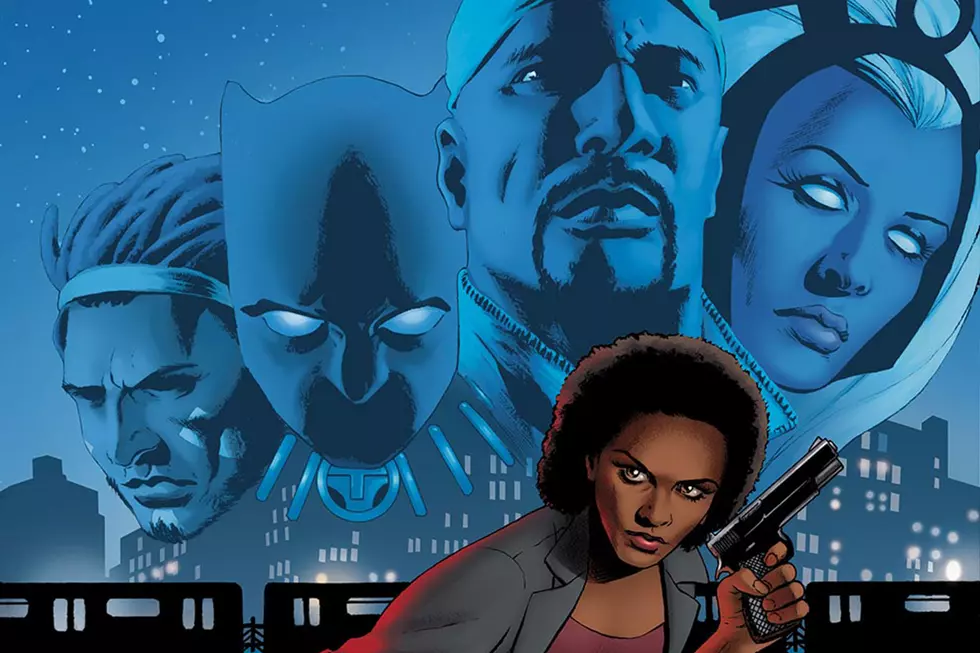
Literature’s Deep Debt: Ten Literary Luminaries Who Love Comics
Comics are often set in opposition to “serious” literature, but that convention is one that has long been flouted by highly esteemed, award-winning authors who grew up reading comic books and aren’t ashamed to talk about their continued love for the medium. Some of them have even tried their hand at writing comics, or have populated their novels with characters who are cartoonists.
Here are ten literary luminaries who have close relationships with comics. Some may surprise you --- but a few won't come as much of a shock! Most are living; some are literary giants that we've lost. Together they represent a diverse swath of the globe. Something they all have in common is excellence: Among these ten writers are three National Book Award winners, two Pulitzer Prize winners, two Mann Booker Award winners, two Nobel Prize Laureates, one MacArthur “Genius Grant” recipient, one National Humanities Medal recipient, one Officer of the French Legion of Honor, and one knight!
SHERMAN ALEXIE
In 1998, Sherman Alexie, author of The Lone Ranger and Tonto Fistfight in Heaven and Smoke Signals, contributed to the anthology The Most Wonderful Books: Writers on Discovering the Pleasures of Reading. What forged Alexie’s literary path? Comic books. “I learned to read with a Superman comic book,” he wrote in his essay Superman and Me. “Each panel, complete with picture, dialogue and narrative was a three-dimensional paragraph.”
In keeping with Alexie’s early reading experience, Junior, the protagonist of Alexie’s National Book Award–winning young adult novel The Absolutely True Diary of a Part-Time Indian, is an aspiring cartoonist. The novel, which is often “challenged” by parents who want to remove it from school libraries and curricula, features comic strips drawn by artist Ellen Forney, author of the graphic memoir Marbles.
If you search online, you can find comic strips and drawings made by kids who were inspired by Alexie’s young adult novel. And that’s awesome.
MARGARET ATWOOD
A newly-announced original series of graphic novels written by Margaret Atwood was a cause for celebration last week in the Venn diagram intersection of “Comic Book Fans” and “Margaret Atwood Fans.” (An intersection that is larger than you might think, by the way, and includes such comics luminaries as Kelly Sue DeConnick, Jamie McKelvie, and Atwood's noted fellow Canadian, Chip Zdarsky.)
Atwood is the author of The Handmaid’s Tale, the Booker Prize-winning The Blind Assassin, and the fascinating and terrifying Maddaddam science fiction trilogy, but Angel Catbird, her collaboration with artist Johnnie Christmas, is not her first foray into comics. An artist herself, Atwood contributed a story that she both wrote and drew to this year’s anthology The Secret Loves of Geek Girls. She also collaborated with artist Christian Ward on a comic for The Guardian.
Atwood spoke about her long relationships with comics in an interview with Entertainment Weekly. She recalled the diverse line-up of comics available during her childhood, saying she never felt excluded from reading comics as a girl. “We all read them! They were adventure heroes. It was like, in a way, Treasure Island: Kids identify with kids, rather than gendered kids.”
MICHAEL CHABON
Michael Chabon’s love of comics should come as no surprise. His Pulitzer Prize–winning historical novel The Amazing Adventures of Kavalier and Clay, published in 2000, tells the story of two young Jewish men who create an iconic comic book superhero, The Escapist. Set during World War II, Kavalier and Clay reimagines elements of the lives of real comic book greats like Jerry Siegel, Joe Shuster, Gil Kane, Bob Kane, Bill Finger, Stan Lee, Jim Steranko, and Will Eisner, among others. Chabon masterfully shows how essential the Jewish experience in the United States --- particularly that of Jewish refugees --- was to the creation of the comic book industry as we know it.
The final sentence in Chabon's acknowledgements in Kavalier and Clay recalls "the deep debt I owe in this and everything else I've written to the work of the late Jack Kirby, the King of Comics."
An anthology series Michael Chabon Presents: The Amazing Adventures of the Escapist featured stories starring the comic book creations from Kavalier and Clay. Will Eisner’s last Spirit story was published in the series' sixth issue. Further stories in the Escapist universe unfolded with the mini-series The Escapists, written by Brian K. Vaughan, with art by Steve Rolston, Philip Bond, Jason Shawn Alexander, and Eduardo Barreto.
Most recently, Chabon has contributed to the super-spy science fiction series Casanova by Matt Fraction, Gabrial Bá, and Fábio Moon, writing back-up stories for the series’ fourth volume.
TA-NEHISI COATES
If the last few the years mark an era when the world has begun to be “woke” to matters of racial and social injustice in the world, Ta-Nehisi Coates’ blistering, meticulously researched and argued essay “The Case for Reparations,” published in the June 20 2014 issue of The Atlantic, was a seminal point in that awakening. Since then, Coates has won a National Book Award for his nonfiction book Between the World and Me and a “Genius Grant” from the MacArthur Foundation.
And when Marvel decided to relaunch Black Panther for 2016, they tapped Coates (the son of an actual Black Panther) for the writing duties. Well-known as a comic book fan, Coates talked about the resonance of superheroes in a Vulture interview.
“I feel sorry for people who only know comic books through movies,” he said. “I really do." Speaking about diversity, he said, “When I was a kid, I knew that superheroes were not exclusively white and male ... And if you have fans who grow up with that, they reach a certain age and they expect you to go to another level.”
Black Panther by Coates and artist Brian Stelfreeze will debut in 2016.
JUNOT DIAZ
As pointed out on this very site in 2012, “It’s no secret that Junot Díaz is a huge comic fan.” The Pulitzer Prize–winning author of The Brief Wondrous Life of Oscar Wao and This Is How You Lose Her was a regular at the comic book store St. Mark’s in Manhattan from the late 1980s, and he fills his novels with geeky pop-culture references.
In an interview with Volume 1 Brooklyn recorded in St. Mark’s, Díaz explains the allure of X-Men comics to a young, nerdy kid. “There’s no better metaphor for otherness than… X-Men mutants,” he said. “It recognizes the difficulties people have — especially young people, especially adolescents, especially kids of color — because your freakishness, your otherness is sort of compensated with some power.”
In his senior year of high school, Díaz said, he had the eye-opening experience of reading Love and Rockets by Gilbert, Jaime, and Mario Hernandez. “[Los Bros Hernarndez] were one of the key motivators and inspirations for my art,” he said. “One was not used to seeing Latinos represented as anything other than an absurdity — they were either maids or... drug dealers.... But these guys created an entire world that resonated with mine…. This was a world that was more familiar to me than all the other toxic representations I was seeing, whether it was in comic books or in movies.”
Díaz had a dream come true in 2013: the publication of a deluxe edition of This Is How You Lose Her illustrated by Jaime Hernandez. “I am over-the-moon giddy,” Diaz told the Washington Post about working with Hernandez, while the artist admitted, “I was a little nervous.”
UMBERTO ECO
The author of The Name of the Rose and Foucault’s Pendulum, as well as a leading intellectual in the field of semiotics, Umberto Eco shares a magical realist sensibility with two other literary giants on this list. Something else they have in common? Early love of comic books.
A 2008 interview with the Paris Review describes Eco’s apartment in Milan: his 30,000-volume library contains literary works and ancient manuscripts, but in his living area there are “several glass cases displaying seashells and rare comics.”
Eco famously didn’t publish any fiction until the age of 48, but his early creative works were comics. “As an adolescent I wrote comic books, because I read lots of them,” he said.
Like many people of nerdy persuasion, Eco’s interests are wide-ranging. As a young scholar of medieval history, he notes, “I began to wonder if I had a bizarre sort of split personality. On the one hand, I was interested in the most advanced functions of language in experimental literature and art. On the other hand, I relished television, comic books, and detective stories.”
Eco is perhaps the most distinguished thinker to examine comics with serious literary criticism. His essay “The Myth of Superman” is not about Nietszche, but rather our boy in blue tights.
GABRIEL GARCÍA MÁRQUEZ
Before Colombian author Gabriel García Márquez was the revered Gabo, author of One Hundred Years of Solitude and Love in the Time of Cholera, grand master of Latin American magical realism, and Nobel Prize Laureate, he was a young comics prodigy. “I began to draw comics before I learned to write,” he recounts in his memoir Living to Tell the Tale. His earliest work, done at four, showed a gruesome, Grand Guignol-esque magic trick in which a magician cuts off his wife’s head and reattaches it.
When he was able to read and write, he used the proceeds from his first job to buy the Sunday edition of the newspaper so he could read the comics Tarzan, Buck Rogers (called Rogelio el Conquistador in Spanish), and Mutt and Jeff (called Benitín y Eneas). “I learned to draw them from memory and would continue the week’s episodes on my own.” García Márquez then sold his comic strips sold to adults in his neighborhood.
García Márquez’s love of comics remained in his adulthood, as he enjoyed them “not just as a Sunday pastime but as a new literary genre condemned without reason to the nursery.”
The admiration is mutual in the case of García Márquez; Gilbert Hernandez’s stories set in the city of Palomar have been compared to One Hundred Years of Solitude, and the novel itself makes an appearance in Hernandez’s graphic novel Palomar.
Gabo: Memorías de una vida mágica, a graphic biography of García Márquez, was published in Colombia in 2013. It played a tactical role in a challenge to graphic novels’ exclusion from that country’s Colombian Book Law, which exempts books from sales taxes. One of the claimants in a lawsuit was Julian Naranjo, the publisher of Gabo. "In the end we all got what we were looking for: the legal acknowledgement of comic books and graphic literature as legitimate cultural products," said Naranjo.
We're sure Gabo himself would be proud of the victory.
Gabriel García Márquez died in 2014, at the age of 87.
DORIS LESSING
Being a future Nobel Laureate didn’t make it easy for Doris Lessing to break into comics. Three artists turned down collaborating with the prolific author of novels, short stories, nonfiction, and opera libretti before Charlie Adlard (currently the artist on a little indie book called The Walking Dead) signed on to draw the graphic novel she wrote, Playing the Game. It was published in 1995.
Lessing’s editor for this book, David Thorpe, recalled that the artists expressed misgivings about her script. “She initially had not written a conventional comics script, which is broken down into pages and panels, but something looser, leaving room, she said, to allow the artist freedom to interpret,” he wrote in a blog post. “This freedom, they felt, demonstrated a lack of understanding of the medium. I don't believe it did for a minute. She understood the medium very well.”
Unfortunately, the series of graphic novels written by literary authors Thorpe envisioned didn’t make it off the ground, aside from Playing the Game, despite a line-up that would have included Kazuo Ishiguro and Angela Carter.
Doris Lessing died in 2013, at the age of 94.
JOYCE CAROL OATES
Joyce Carol Oates’ love of Mad magazine is well-known. In 2007, the famously prolific author --- who has won a National Book Award, two O. Henry Awards, and received the National Humanities Medal from President Obama in 2010 --- wrote about Mad for Time magazine in a “Guilty Pleasures for Summer” feature.
“But why ‘guilty’?” she queried, calling Mad “wonderfully inventive, irresistibly irreverent and intermittently ingenious.” “No one who admires Mad magazine really feels the need to apologize or defend himself.”
In her memoir, The Lost Landscape: A Writer’s Coming of Age, Oates writes about her childhood discovery and love of Mad and the horror comic Tales from the Crypt. The latter no doubt played a role in inspiring her fiction. Oates has written several volumes of horror, but even in her non-horror fiction, a strain of the gothic underlies the atmosphere and tension.
And what of contemporary comics? Oates is a fan of Hellboy. In a blurb for a volume of Mike Mignola’s creation, she wrote, “In the ruins of American Empire, what more appropriate figure of salvation/damnation than Mike Mignola’s Hellboy?”
SALMAN RUSHDIE
Like many comic book fans, Sir Salman Rushdie, Man Booker Prize winner and famous target of a fatwa, is not lacking in confidence about his knowledge of the hobby: “I'm a world expert on superhero comics," he said in 2008. "I think maybe only Michael Chabon knows more than me."
Alas, Rushdie’s childhood comic book collection met the fate of so many others: His father threw it away. (And of course Rushdie thinks his childhood comics would be worth a fortune now.) But the influence of superhero comics persists in his fiction. Midnight’s Children, perhaps his most famous novel, focuses on a group of super-powered adolescents who were born at the precise moment that marks “partition” --- the separation of India and Pakistan.
The protagonist of the novel, Saleem Sinai, is something of a Professor X figure, using his psychic abilities to conduct “meetings” amongst the children. However, Saleem is a Superman fan, and his comics evangelism plays an unexpected role in the life of his friend Cyrus: Cyrus’ mother invents a story about Cyrus’ supernatural origin based on a Superman comic that Saleem gave to him, and Cyrus becomes the guru Lord Kushro Khusrovand.
Rushdie has been rumored to be in talks to write a graphic novel for several years (his friend Doris Lessing recommended doing so), but for now we must be content to have Jimmy Kapoor. A character in his most recent book, Two Years, Eight Months, and Twenty-Eight Nights, Kapoor is a comic book artist who creates a superhero that comes to life.
More From ComicsAlliance


![A New Team Bands Together In ‘Black Panther & The Crew’ #1 By Coates, Harvey, And Guice [Preview]](http://townsquare.media/site/622/files/2017/03/Black_Panther_The_Crew_1_Featured.jpg?w=980&q=75)




![Take To The Skies With ‘Angel Catbird Volume 2: To Castle Catula’ [Preview]](http://townsquare.media/site/622/files/2017/01/AC0.jpg?w=980&q=75)

